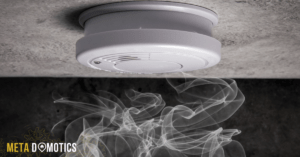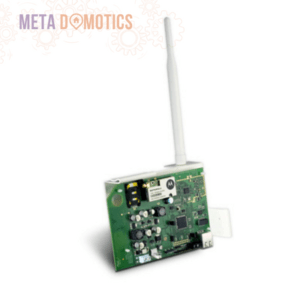Bed alarms are devices that alert nurses/caregivers when a patient leaves their bed. Bed alarms in nursing homes provide an early warning if the patient attempts to wander or fall out of bed, allowing nurses/caregivers to intervene quickly and help prevent injury.
The purpose of this article is to explore the effectiveness of bed alarms in preventing falls and other injuries among patients who are at risk for wandering or falling out of bed.
We will examine various studies on the efficacy of these devices and discuss their importance in providing a safe environment for those in care.
We can better equip healthcare professionals with the knowledge they need to make informed decisions about whether or not such devices are appropriate for each individual patient’s needs by learning more about how they work.
How do Bed Alarms Alert Caregivers?

Bed alarms alert caregivers in a variety of ways, depending on the type of alarm used.
The most common type is an audible alarm, which sounds when the patient gets out of bed.
Other alarms use LED lights or vibrations to notify caregivers that the patient is getting out of bed.
Monitors provide additional information such as the patient’s name, room number, and other details
Types of Bed Alarms
Bed alarms come in a variety of styles, each designed to meet the specific needs of a particular patient.
Audible alarm: The most common type of bed alarm is an audible alarm that will sound when the patient exits the bed.
Motion alarm: The type of alarm that can detect motion or weight and alert caregivers through an LED light or vibration.
There are even alarms that can be set to detect changes in the patient’s body temperature or respiration rate.
Components of A Bed Alarm System
A bed alarm system typically consists of the following components:
Sensor Pad: This is a padded, lightweight mat that can be placed beneath the patient’s mattress. When the patient leaves the bed, it detects movement and sounds an alarm to notify caregivers.
Alarm: The type of alarm used is determined by the patient’s needs. Audible alarms, LED lights, and vibration alerts are all common types.
Monitors: This is a device that connects to the alarm system and displays information such as the patient’s name, room number, and other details. It can also alert caregivers with an audible beep or flashing light if necessary.
Studies on The Effectiveness of Bed Alarms
Studies have found that bed alarms are effective in reducing the frequency and severity of falls among elderly and/or cognitively impaired patients.
One study, conducted by the Agency for Healthcare Research and Quality, looked at over 5,000 people with dementia and discovered that those who used a bed alarm had a 15% lower risk of falling than those who did not.
Another study, conducted by the University of New Mexico, discovered that bed alarms were linked to a 56% reduction in falls.
Factors Affecting The Effectiveness of Bed Alarms
Type Of Alarm: Different alarms have varying effectiveness levels. Audible alarms are the most responsive, while LED lights and vibration alerts may take a little longer. Monitors can provide additional information for faster intervention.
Installation: Bed alarms must be installed correctly to work properly. Read instructions carefully and ensure a secure fastening before use.
Caregiver training: Caregivers need proper training to use bed alarms effectively and should know the different types of alarms and monitors to choose the best option for each patient
Alternatives To Bed Alarms
Bed Sensor Mat: Bed sensor mat is a lightweight padded mat that detects when a patient leaves the bed and triggers an alarm to alert caregivers. It can be used with other alarms to create a comprehensive monitoring system.
Video Monitoring: Video monitoring systems track patient movements in order to monitor activities and alert caregivers of any unusual behavior, ensuring the safety and protection of vulnerable patients such as those suffering from dementia or Alzheimer’s.
Other methods: Other fall prevention methods include exercise to improve strength, balance, and coordination, physical therapy for underlying conditions, and safety technologies such as infrared sensors, smart floor sensors, and assistive devices.
Benefits of Bed Alarms
1. Immediate response to patient movement with audible alarms.
2. Less frequent and severe falls in the elderly or cognitively impaired patients.
3. Caregivers can be alerted with LED lights, vibration alerts, or monitors that provide
additional information about the patient’s name and room number.
4. Easy installation with lightweight sensor mats placed underneath the mattress for added
protection against falls.
Limitations of Bed Alarms
1. Bed alarms are costly and may not be covered by insurance.
2. They have a limited range and may require the use of an additional monitor to detect movement outside of the room or area in which they are installed.
3. If using a wearable device, some patients with dementia or Alzheimer’s disease may find it uncomfortable to wear, which can reduce compliance with using it regularly or at all times when needed for safety purposes.
4. They do not provide direct fall protection, but rather serve as an alert system that requires
intervention from a caregiver or other personnel to prevent a fall in the first place.
Ethical Consideration
1. Patient Privacy and Dignity: Bed alarms should be used with consideration for the
patient’s privacy and dignity.
Caregivers should ensure that the alarm is only activated when necessary and that its use does not embarrass or humiliate the patient.
2. Informed Consent: Before using a bed alarm, patients should be informed of its purpose
and use.
3. Patient Comfort: If a wearable device is used, it must be comfortable for the patient to
wear so that it can be used safely and on a regular basis.
4. Training: In order for bed alarms and other safety technology to be effective, caregivers must
be properly trained in their use
Conclusion
In conclusion, bed alarms can be a helpful tool for caregivers to monitor the movements of elderly or cognitively impaired patients and alert them when there is any suspicious behavior.
They provide an immediate response through audible alarms, LED lights, and vibration alerts, ensuring patient safety at all times. They are, however, costly and are not always covered by insurance plans.
When using these devices, ethical considerations such as privacy, dignity, and informed consent must also be taken into account.
More research should be conducted to find ways to make these devices more affordable while still providing adequate fall protection in vulnerable populations such as those suffering from dementia or Alzheimer’s disease.







